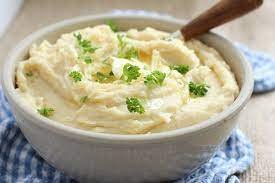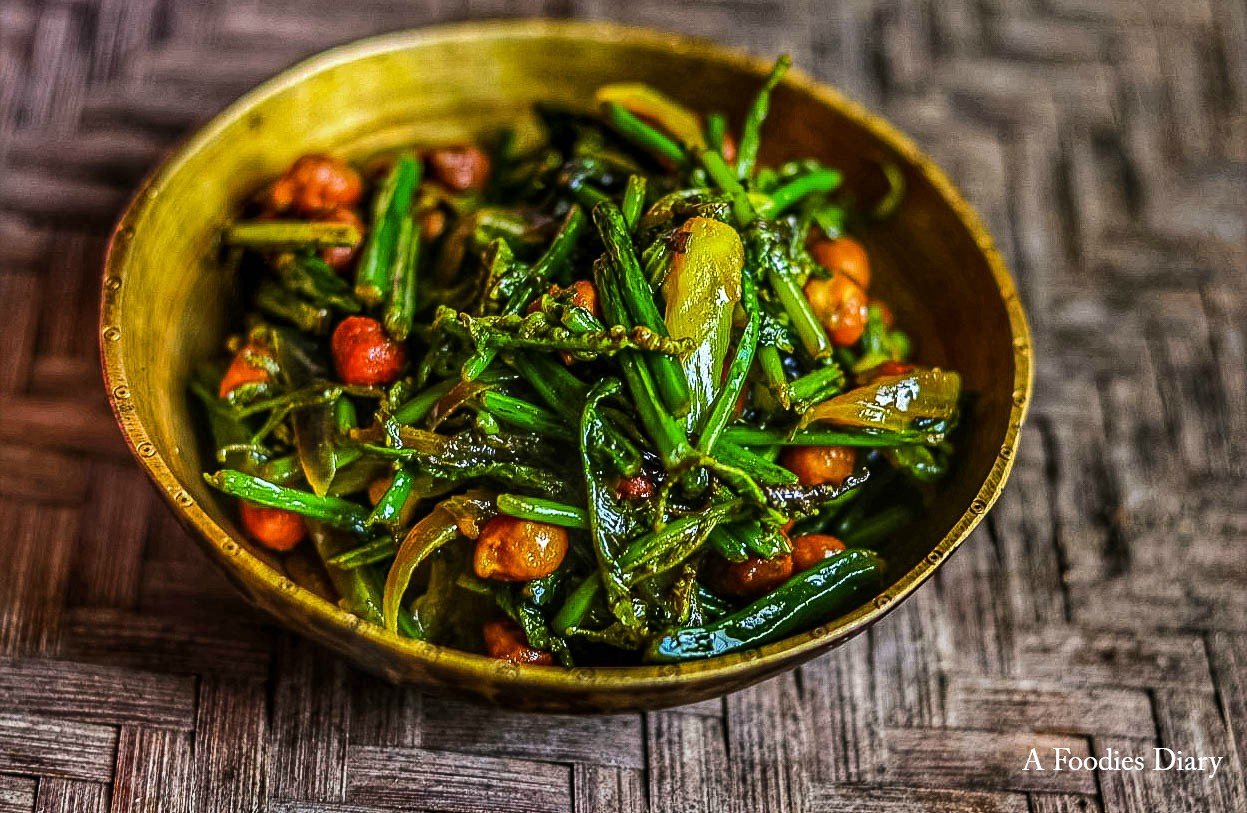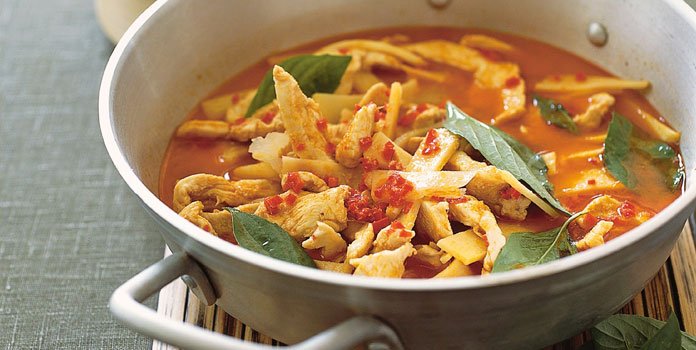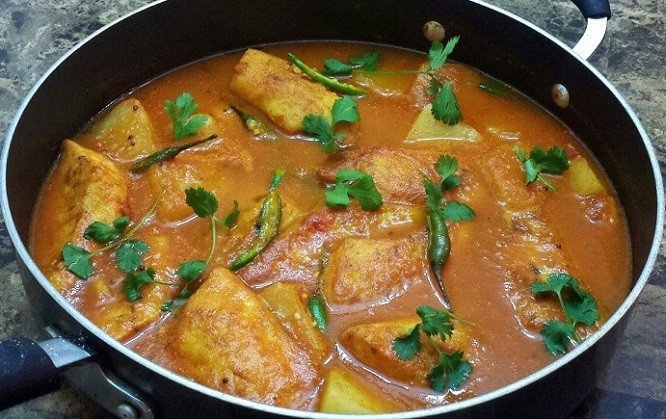Ingredient Ideology | Assamese Culinary Delights By: Dr. Kaviraj Khialani- Celebrity Master Chef.
/




The name Assam is derived from the word asama, meaning “peerless” in the now extinct Ahom language. The neighbouring states of Arunachal Pradesh, Nagaland, Mizoram, and Meghalaya were once part of Assam. The capital, formerly Shillong (now the capital of Meghalaya), was shifted to Dispur, a suburb of Guwahati, in 1972. Assamese cuisine is the regional food of Assam. It is a style of cooking that is a confluence of cooking habits of the hills that favour fermentation and drying as forms of preservation and those from the plains that provide fresh vegetables and an abundance of fish and meat.
Both are centred on the main ingredient being rice. Rice is the staple diet and the common people of Assam eat it every day. Along with rice, fish curry is very common. Other dishes include those made of lentils, vegetables, meat and some sweet dishes. The people of Assam prefer to eat non - spicy foods.
Assamese are mostly non-vegetarian, and their staple diet is rice. Fish, chicken, duck and pigeon and pork are widely eaten and quite popular. Fish curry is another favourite which is prepared as a sour dish called Machor tenga. Assamese cuisine is known to be very light and rightly deserves the tag 'comfort food' for various reasons. It's also very healthy and not bland in taste. Healthy Veg/Non-veg Assamese Food: Assam is blessed with the mighty Brahmaputra which means the soil is rich with nutrients. Lifestyle. Although in general Brahmins observe all the customary rituals, they appear usually less rigid in some of their traditional lifestyle choices, such as they may eat meat, fish, unlike their counterparts in North India. With the 'Tropical Monsoon Rainforest Climate', Assam is a temperate region and experiences heavy rainfall and humidity.
Like Southern Indian cuisine, Assamese cuisine is mostly rice-based and incorporates fresh vegetables and meat. But the dishes in Assam also include things rarely seen in other parts of the country, including river fish, duck, and pigeon. Pitha is one of the most popular street side dishes found in Assam. It is made of rice flour and can be made in a sweet as well as savoury preparation. It uses a batter of rice and is filled with a filling of either cabbage, radish, jaggery, coconut. Major Fruit crops of the state – Banana, Pine apple, papaya, Assam lemon, Orange, Guava, Litchi, Jack fruit and Mango.
Some more beneficial information about foods from Assam :
This cuisine is characterized by very little use of spices, little cooking over fire and strong flavours due mainly to the use of endemic exotic fruits and vegetables that are either fresh, dried or fermented. Fish is widely used, and birds like duck, pigeon, squab, etc. are very popular, which are often paired with a main vegetable or ingredient. Preparations are rarely elaborate. (The practice of bhuna, the gentle frying of spices before the addition of the main ingredients so common in Indian cooking, is absent in the cuisine of Assam) The preferred oil for cooking is the pungent mustard
A traditional meal in Assam begins with a khaar, a class of dishes named after the main ingredient. Another very common dish is tenga, a sour dish. Traditionally, both khar and tenga are not eaten together in the same meal. The food is usually served in bell metal utensils made by an indigenous community called Mariya. The belief is that when food and water is served in such utensils it’s good for health and boost up immunity. Tamul (betel nut, generally raw) and paan generally concludes the meal.
Though still obscure, this cuisine has seen wider notice in recent times. The discovery of this cuisine in the popular media continues, with the presenters yet to settle on the language and the specific distinctiveness to describe it. Besides rice, the next most important ingredient is fish, harvested from the many rivers, ponds and lakes in the region. The extremely wet climate and the large numbers of water bodies has ensured that large varieties of fresh water fish are available in abundance in the valley. It is a staple item in the Assamese palate. There is no traditional ethnic community in Assam that does not eat fish. Most traditional rural households have their own ponds for pisciculture. The most common way of eating fish in traditional Assamese homes is by preparing a stew with herbs, vegetables, and greens as per preference and availability. Fish is also prepared by roasting or char-grilling. A favourite is a small fish roasted in banana leaves. Hukoti is a special fish dish prepared from dried small fish like (puthi maas) pounded with arum stem and dried and stored in bamboo tubes. Variations of this exist among the ethnic communities of northeast India in general and Assam in particular.
Assamese also consume meat, The Assamese meat and fish dishes are characterized by a low amount of spices and oil, higher quantity of ginger, noroxinghow paat (curry leaves), Khorisa (fermented bamboo shoot) and lemon juice, and differ completely in taste from the dishes of neighbouring Bengal and are quite similar to the cuisines of nearby South-East Asian and East Asian countries. Chicken, Venison, Squab, Mutton, Duck and Pork is very popular among the indigenous ethnic Assamese communities.
The basic cooking methods include cooking, shallow and deep frying. Onla, of the Bodos, is made with ground rice and special herbs and constitutes a complete meal in itself. Other meats include squab, duck, chicken, goat meat, venison, and turtle although venison and turtle meat are legally prohibited. The combination of duck/white gourd and squab/papaya or banana flower is very popular. Meat is generally stewed using limited spices as well as a choice of herbs and vegetables. Most communities of Assam are entomophagous. Various indigenous ethnic groups of certain areas partake of the silkworm, water bugs, grasshoppers, and other insects. Insects are fried or cooked or roasted in leaves and then prepared according to the timing of the meal. The red ant egg is considered a delicacy during the Rongali Bihu festival.
Spices are also a very important part of Assamese cooking, Among spices there are ginger, garlic, onion, cumin seed, black cumin, black pepper, chilli, turmeric, corianderseed, cinnamon, cardamom, clove, fenugreek seed, white mustard seed, aniseed, Malabar leaf etc. An Assamese meal is incomplete without green chilies, many varieties of which are available in the region. Pura refers to various forms of grilled and roasted food. Vegetables, meat and fish are often served in this form. Aalu benzene pura Pitika, pura maas Pitika (mashed grilled fish), pura mankho etc. are a few of the popular dishes.
Cooking with fish is popular, the Noroxinghow masor jul is another authentic dish from Assam. The fishes are cooked in a light gravy of curry leaves which is a common aromatic herb used in southern and some northern parts of India. The curry leaves are also known as noroxinghow paat in Assamese. The fish preparations in Assam emphasize on retaining the natural flavours of the fish, and hence, few spices are used. The khar is a signature class of preparations made with a key ingredient, also called khar.
The traditional ingredient is made by filtering water through the ashes of the sun-dried skin of a few varieties of banana, which is then called kola khar (The name derived from the local term for banana, "khol" or "kola.") A traditional meal invariably begins with a khar dish, which can be prepared with raw papaya, mustard leaves, vegetables, pulses, fish or any other main ingredient.
Assam is famous for the bhut jolokia or ghost pepper, which was recognized as the hottest chili in the world. Panch-furan (mixture of 5 spices) is used for adding flavour to Dals, which was not earlier eaten by indigenous people of Assam but now slowly due to external influences Dal is also eaten with their own traditional style of cooking it. Pickles are made of mango, indian gooseberry, hog plum, Indian olive, Tamarind, star fruit, mangos teen, radish, carrot, elephant apple, Indian jujube, chili, lime, garlic, etc. Pani tenga and kharoli are signature Assamese pickles made from ground mustard seeds.
Cooking with greens- The environs of Assam are rich in vegetation, and green leafy vegetables, called Xaak, are an important part of the cuisine. Some of them are grown while others like the dhakai (fern) grows wild. There is a bewildering variety that is eaten and according to custom, one has to have 101 different Xaak (greens) during Rongali Bihu. Herbs, greens, and vegetables are commonly eaten by simply cooking in water and salt, lightly frying, as a thick soup or by adding to varieties of lentils. They are also prepared in combination with fish, meat and eggs.
Besides various other dishes, Jolpan (snacks) in Assamese is what is breakfast although it is not always served as breakfast in Assamese cuisine. They are eaten as light meals between main meals and widely served during Bihu, weddings, Assamese shraadhs or any other kind of special occasions and gatherings. Some types of jolpan are Bora saul (varieties of sticky rice) eaten in combination with hot milk, curd, jaggery, yogurt or seasonal ripe fruits. These are probably some of the earliest forms of "cereals". Assamese people have been eating them mainly as breakfast for many centuries.
Pitha (rice cake) is a special class of rice preparation generally made only on occasions like Bihu in Assam. Made usually with soaked and ground rice, they could be fried in oil, roasted over a slow fire or baked and rolled over a hot plate tea of course is an indispensable part of Assamese cuisine. It is served in form of Black tea, Milk tea, Herbal Tea, Spiced tea, Green Tea, Lemon tea (adding lemon juice to black tea), etc. Most of the Assamese people like to drink laal saah (red tea). Liquor is an integral part of linguistically and culturally diverse communities in Assamese society. Rice is a primary ingredient for the many rice beers.
Here are a few easy to make Assamese Recipes for our readers to try:
Recipe-1] BAANHGAJOR LAGOT KUKURA
[CHICKEN WITH BAMBOO SHOOTS]
Ingredients:
Chicken curry cuts- 750 gms with bones/ skin optional
For the marination:
Oil- 2-3 tbsp./ mustard oil- 2-3 tbsp.
Salt to taste
Turmeric powder-1/2 tsp
Ginger paste- 2 tsp
For the curry:
Bamboo shoots- 1 cup, cut into 2 inch pieces
Oil/ mustard oil- 3-4 tbsp.
Green chilies- 4-5 no slit
Cumin powder-1 tsp
Coriander powder-2 tsp
Onion- 2 small, sliced
Garlic paste-1 tsp
Salt to taste
Red chili powder-2 tsp
Water as needed for cooking
Assortment of flavours as an option:
Tomatoes- 2 medium sized, chopped
Or tamarind pulp-1/4 cup with ½ tsp sugar
Coriander leaves- 2-3 tbsp. chopped
Steamed white rice/ boiled rice.
As an option- add potato cubes with chicken.
Method:
1. Prepare all the ingredients for the chicken and bamboo shoot recipe.
2. Clean, wash and prepare the chicken pieces and apply the marination on the chicken pieces and rub it well all over and keep it covered in a cool place/ refrigerate it for 20-30 mins.
3. Once the chicken is well marinated, heat some mustard oil in a pan to nice smoky point, add in the onions, chilies and ginger-garlic paste and saute it all for a few minutes. Add little water as needed to prevent burning.
4. Once the onions are lightly browned, add in the chicken pieces into the pan and saute well add in all the remaining spices and salt to taste and bhunao for a couple of minutes, add some water and allow to simmer and cook, if using tomatoes then we can add them at this stage and saute, add water, simmer and cook.
5. Add in the tinned/ canned bamboo shoot pieces into the chicken and simmer for 4-5 mins, add in coriander leaves and adjust the salt and texture of the gravy as needed to enjoy it with rice, serve hot.
Recipe-2] MASOOR TENGA- TANGY FISH CURRY
[assamese style fish curry]
Ingredients:
Fish of your choice/Rohu fish/ Cartla fish/ surmai etc- 750 gms, sliced
For the marination:
Mustard oil- 3-4 tbsp.
Salt to taste
Turmeric powder-1/2 tsp
Red chili powder-1 tsp
Lime juice-2-3 tbsp.
Ginger-garlic paste-1 tsp
For the curry:
Mustard oil- 2-3 tbsp.
Ginger-1 tsp paste
Garlic-1 tsp paste
Onions- 1 small chopped
Salt to taste
Turmeric powder-1/4 tsp
Red chili powder-1/2 tsp
Coriander powder-1 tsp
Cumin powder-1/2 tsp
Water as needed
Tomatoes- 1 cup chopped/puree
Coriander leaves- 2 tbsp. chopped
Ridge gourd- 1 cup chopped
Green chilies- 2-3 slit
Tamarind pulp- 2-3 tsp
Lime juice-2-3 tsp
Fenugreek seeds/ methi seeds-1/2 tsp
Method:
1. Prepare all the ingredients for the fish curry recipe and keep it ready.
2.Clean, wash and prepare the fish pieces for the marination, apply it well on the fish and keep it refrigerated for 20 mins.
3. To start cooking, heat oil in a pan, add in the marinated fish pieces and shallow fry them for a couple of mins and remove, keep aside.
4. In the same pan, add in the fenugreek seeds, onions, ginger- garlic- chilies, saute well, add in the ridge gourd and saute, add in salt and all other spices and tomatoes, cook the masala well for 8-10 mins, add a little water.
5. Once the gravy is simmering, add in the shallow fried fish pieces, and allow them to steep in the curry for 4-5 mins, check for salt and adjust, add in tamarind pulp/ lime juice, fresh coriander leaves and serve hot with steamed rice/ white rice.
Recipe- 3] XAAK ARU BHAJI
[ greens with assorted vegetables]
Ingredients:
Greens/ ferns/ Xaak- 300 gms
Mustard oil- 3-4 tbsp.
Onion- 1 med sized sliced
Potato- 2 med sized chopped
Garlic- 6-8 cloves, chopped
Salt to taste
Turmeric powder- ½ tsp
Cumin seeds-1 tsp
Pachphuran mix- 1 and a half tsp
Ginger- 1 tsp chopped
Green chilies- 3-4 slit
Lime juice-2 tsp
Dry red chilies-1-2 no may be used
Options for veg- Bottlegourd/ sweet potato/ yam can be used.
Method:
1. Prepare all the ingredients for the easy to make greens with local vegetables.
2. Clean, wash and soak the Xaak/ greens/ ferns in water for 10-12 mins, refresh them, roughly cut them into 1-2 inch pieces.
3. Heat up a kadai, add in the mustard oil and smoke it up, turn off the flame, add in the cumin, Pachphuran mix, onions, green chilies and saute for a few seconds.
4. Add in little water, turn on the flame, add in the ginger, garlic and saute it for a few seconds, add in the onions and potatoes and mix.
5. Now add in some salt, powdered spices as per taste and little water and allow veggies to cook for a few mins, add in the greens, mix well and continue cooking on a low flame for 12-15 mins.
6. Check for salt in the Xaak and adjust it accordingly, this is a side dish and should be moist and not very watery, add a little lime juice towards the end and mix, serve it hot with rotis etc.
Recipe-4] OU TENGA [ ELEPHANT APPLY PICKLE/ CHUTNEY]
Ingredients:
elephant apple- 2-3 no, cut/slice
jaggery- ¾ cup, grated
sugar- ½ cup
cumin seeds- 1 tsp
red chilli powder-1 tsp
bay leaf- 1-2 no
dry red chilies- 2-3 small, slit
cups of water-1 and a half cup
vegetable oil- 1-2 tbsp.
broken cashews- 2-3 tsp
raisins- 2 tsp
walnuts- 50 gms
salt-1/2 tsp
Method:
1. Remove the petals of elephant apple. Clean the edible soft petals under running water.
2. In a pressure cooker take the elephant apple pieces. Add 2 cups of water. Close the lid. In high heat cook for 3-4 whistles.
3. Remove from heat. Let the cooker open itself.
4.In a pan, heat oil. Add dry chillies, bay leaf and cumin seeds. When crackling, pour everything from the cooker.
5. Add sugar and jaggery. Cook until sugar and jaggery melts. Add red chilli powder, Add raisins, cashew nuts and dates. (optional)
6.Stir consistently until great amount of water gradually evaporates and until the chutney thickens, Remove from heat. Let it cool.
7. Elephant apple chutney is ready to serve. You can store it in glass container in your refrigerator and use it for 3-4 days. It is best enjoyed with meals as it adds a nice tartness to the meal too.
Recipe-5] ALOO PITIKA [MASHED POTATO IN MUSTARD OIL]
Ingredients:
Potatoes- 3-4 medium sized, peeled and cut 1 x 2
Mustard oil- 2-3 tbsp.
Sliced onion- 1 medium sized
Salt to taste
Green chilies- 3-4 chopped
Coriander leaves- 2-3 tbsp. chopped
Method:
1. Set the potatoes to boil. I used a pressure cooker and cooked till 3 whistles so the potatoes became soft and fully cooked. The timings above are based on the same.
2. Meanwhile prepare the other ingredients, slice/chop the chilies, onions small pieces or fine chopped, and also finely chop the coriander leaves.
3.When the cooker is ready to open, peel the potatoes and then mash them as you would for chokha. Check that there are no chunks of un-mashed potato.
4. Add in the salt, chilli, chopped onions and mustard oil. Mix it all well. Either mix in the coriander leaves or use them as garnish. Serve with rice and dhal or with roti, this one goes well with almost anything on the plate.
5. At times, I do the same recipe by giving it a tempering of Pachphuran- mix of five spices or even some cumin and mustard seeds with green chilies go well as a tadka to the mashed aloo.
Recipe-6] ASSAMESE PITHA [ HOME-MADE SWEET]
Ingredients:
Rice flour- 2 cups
Maida- 2-3 tsp
Salt- ¼ tsp
Baking powder-1/2 tsp
Fennel seeds/ saunf- 1 tsp
Jaggery- ¾ cup, melted
Water as needed
Oil to deep fry the Pitha
Assorted chopped nuts to garnish- as needed
Method:
1. Prepare all the ingredients as listed above for the home-made fried sweet dish.
2. We can modify the recipe a little as per taste for instance if we wish to use a little green cardamom powder/ crushed black pepper in combination with fennel seeds it can also be done.
3.Using water at room temperature, prepare a nice thick batter like mixture, add water little at a time not to make it very watery.
4.Heat up oil/ ghee in a kadai or frying pan and once it is well heated we can start the frying process, drop in portions of the prepared batter like thick mixture into the medium hot oil and fry the Pitha well on all sides, it will take a couple of minutes to get cooked.
5.Once a nice golden brown color has been achieved after frying the Pitha we can remove them from the oil, drain excess oil on a kitchen paper/towel or tissue, dust them with a little powdered sugar, cinnamon powder/ castor sugar and green cardamom powder etc and serve with a cuppa chai!



